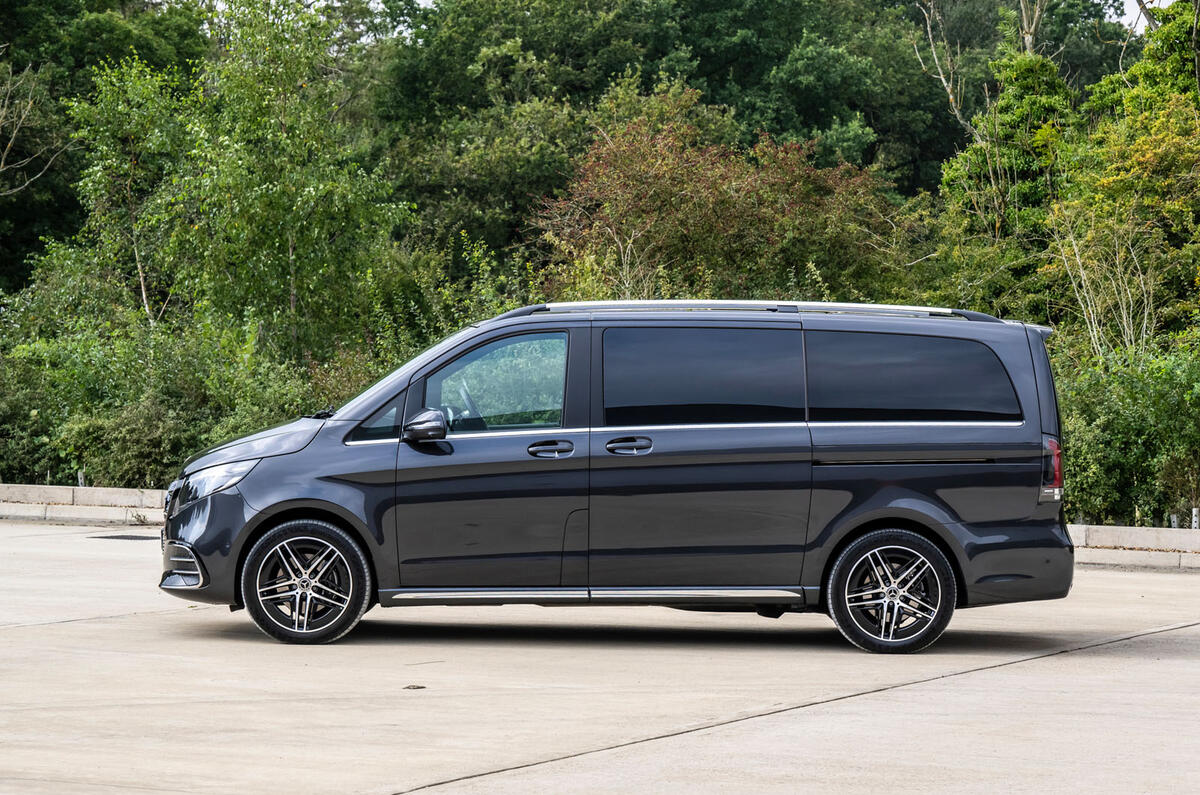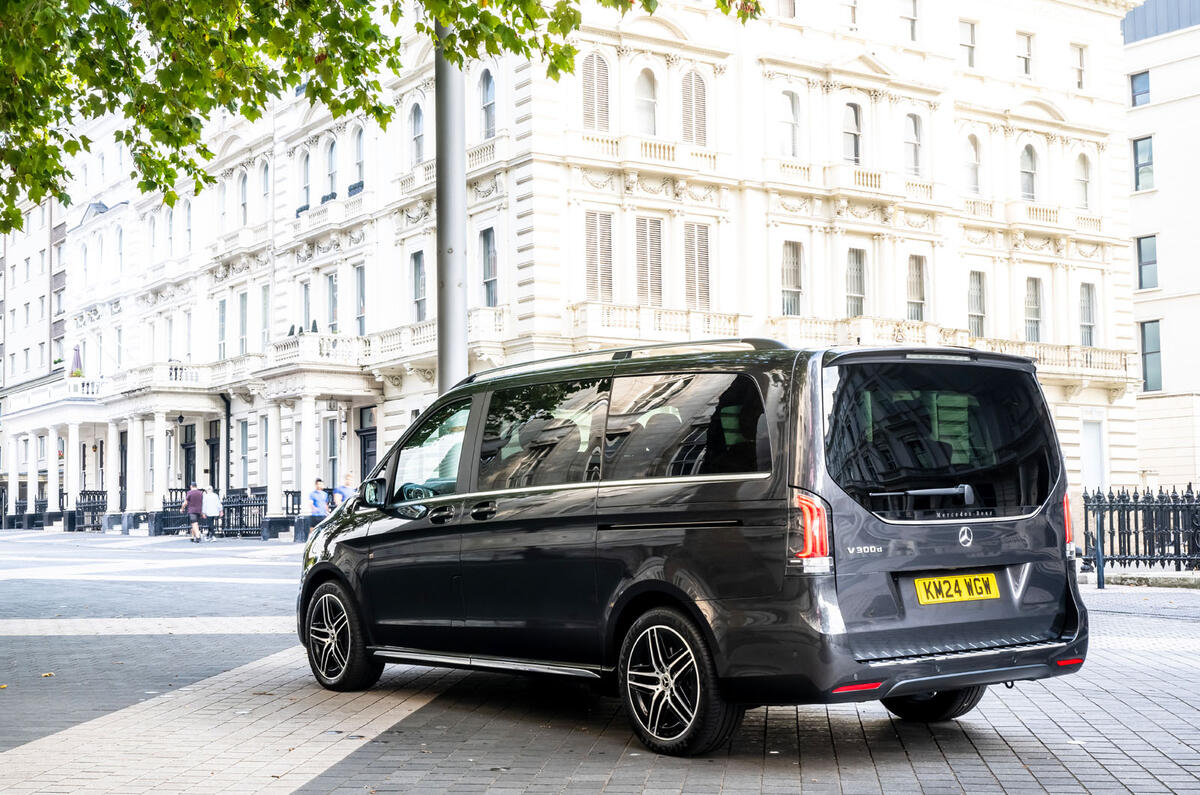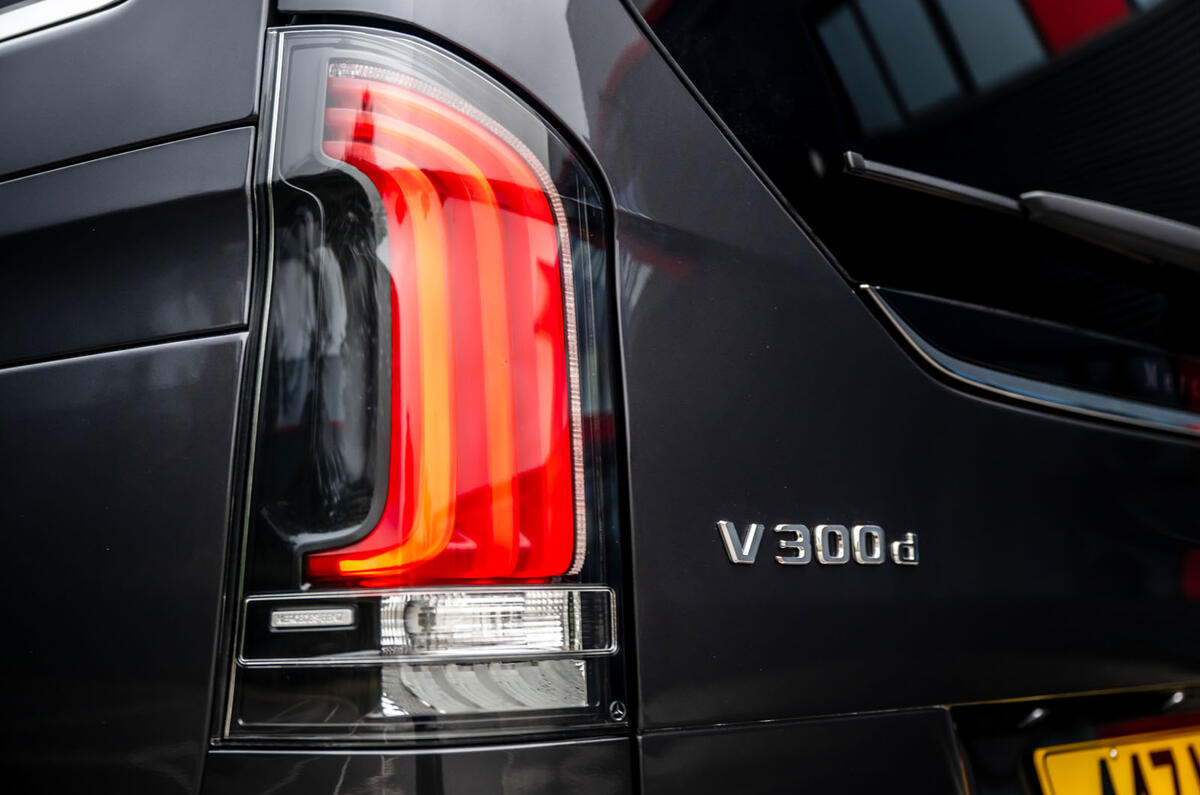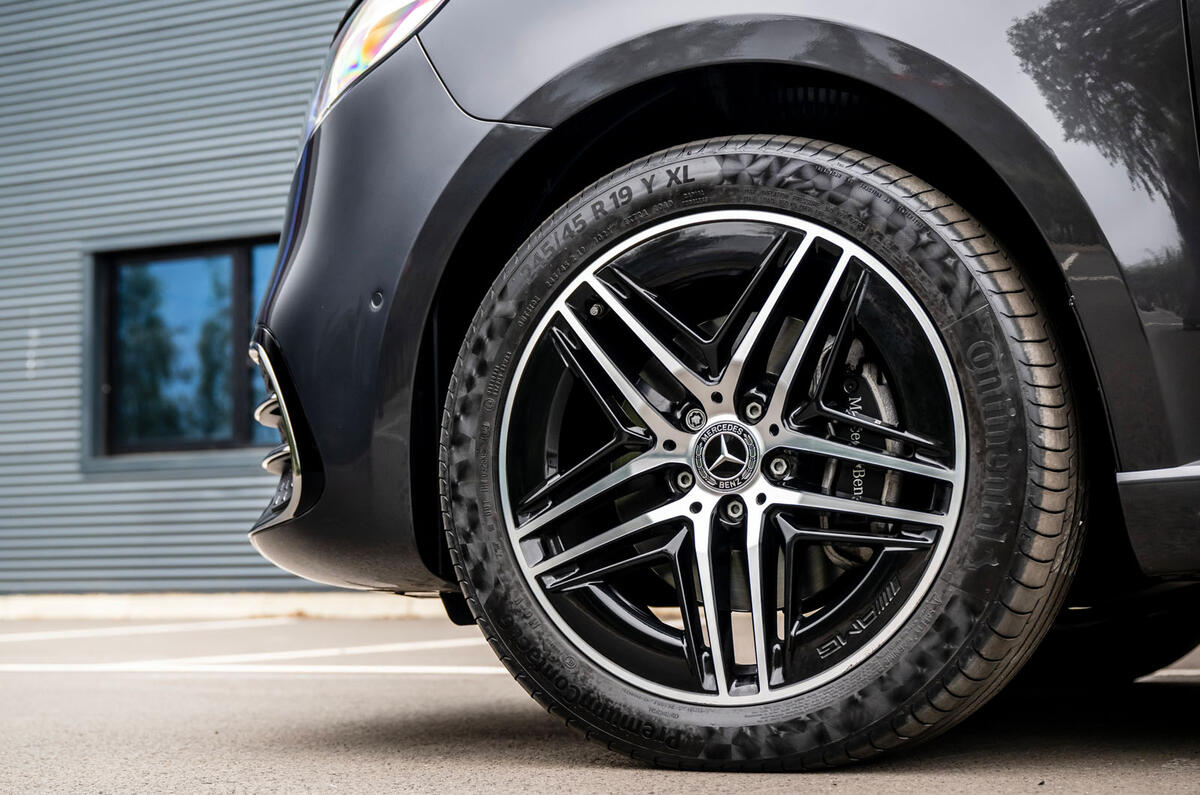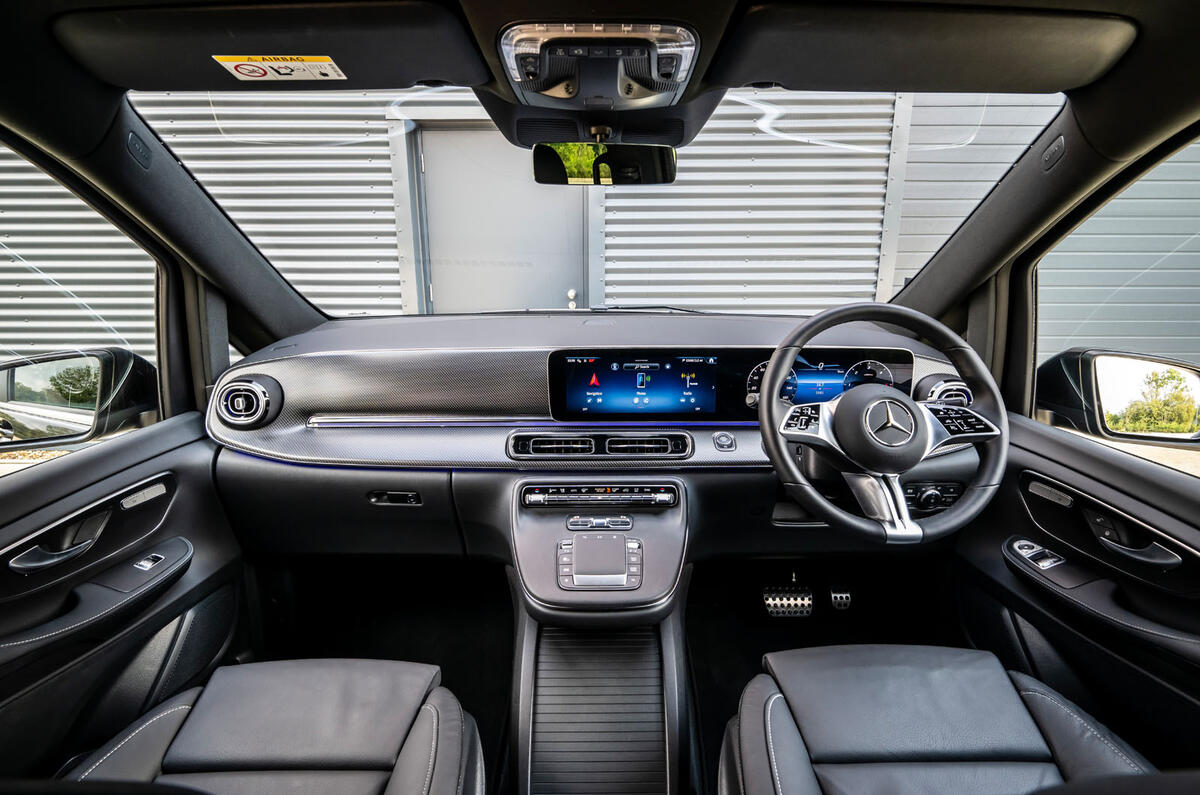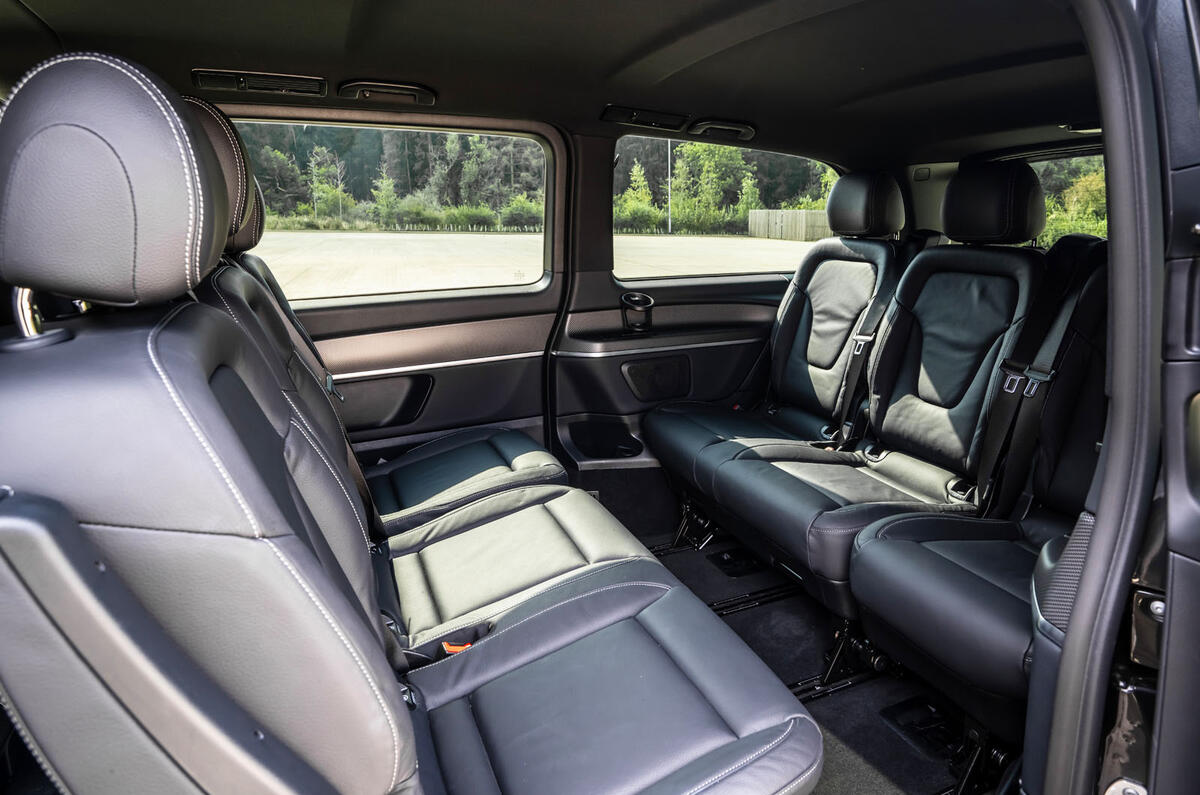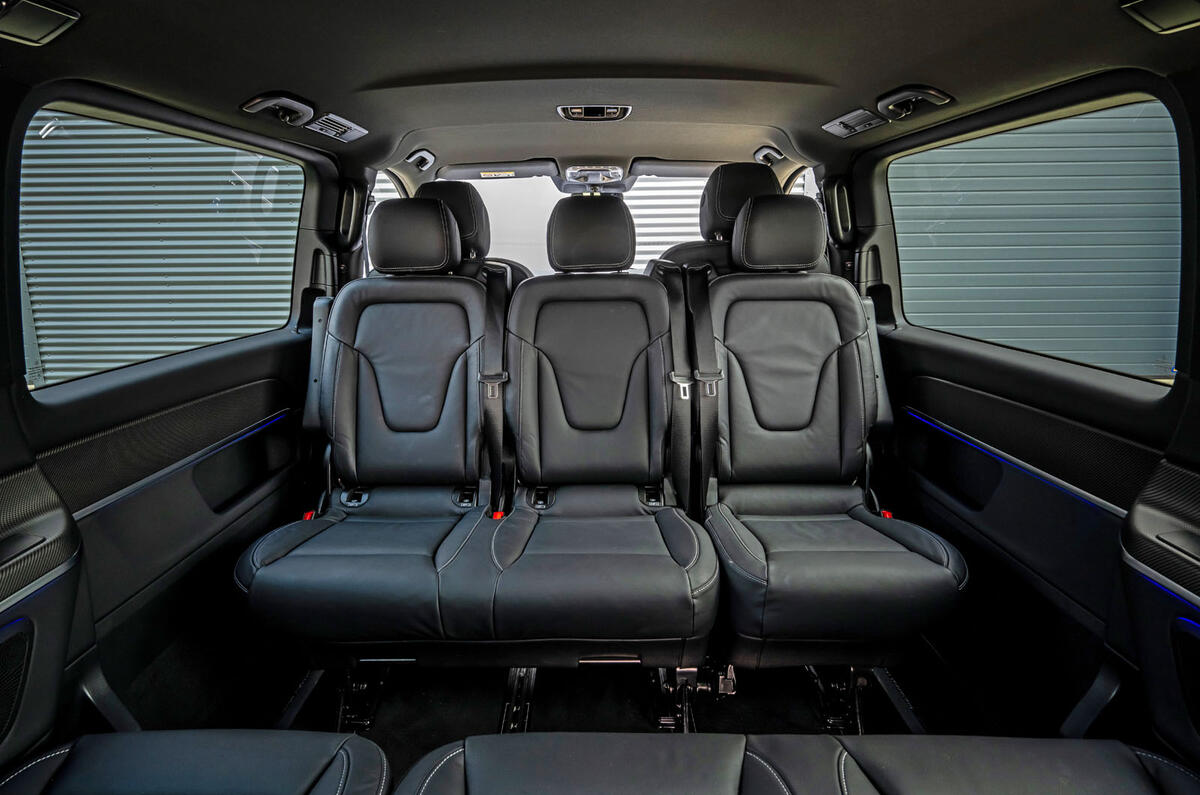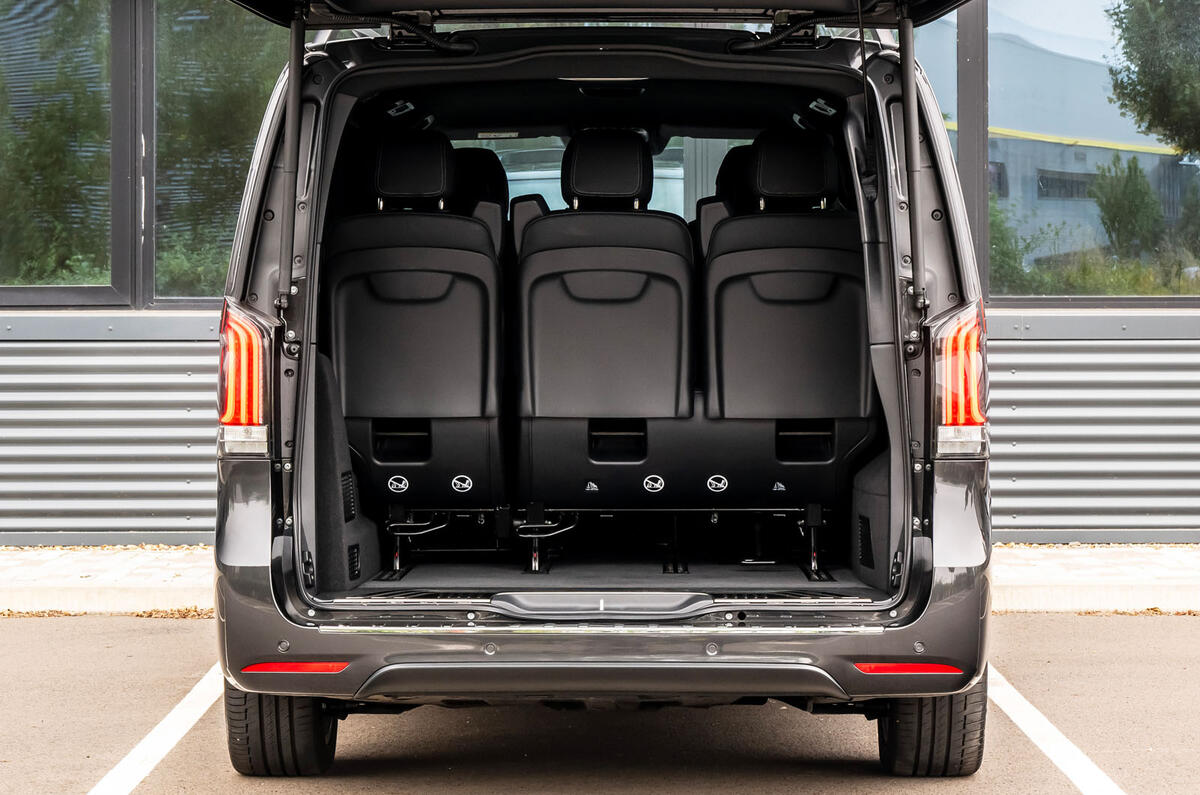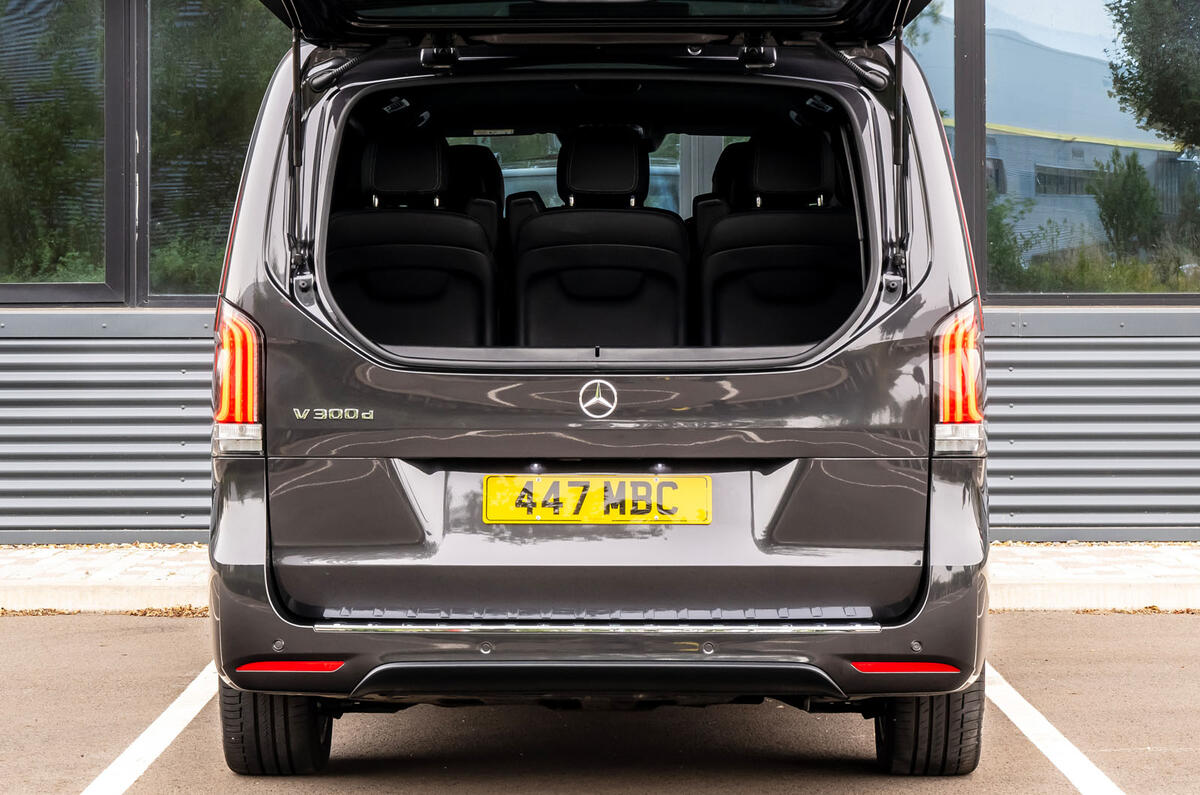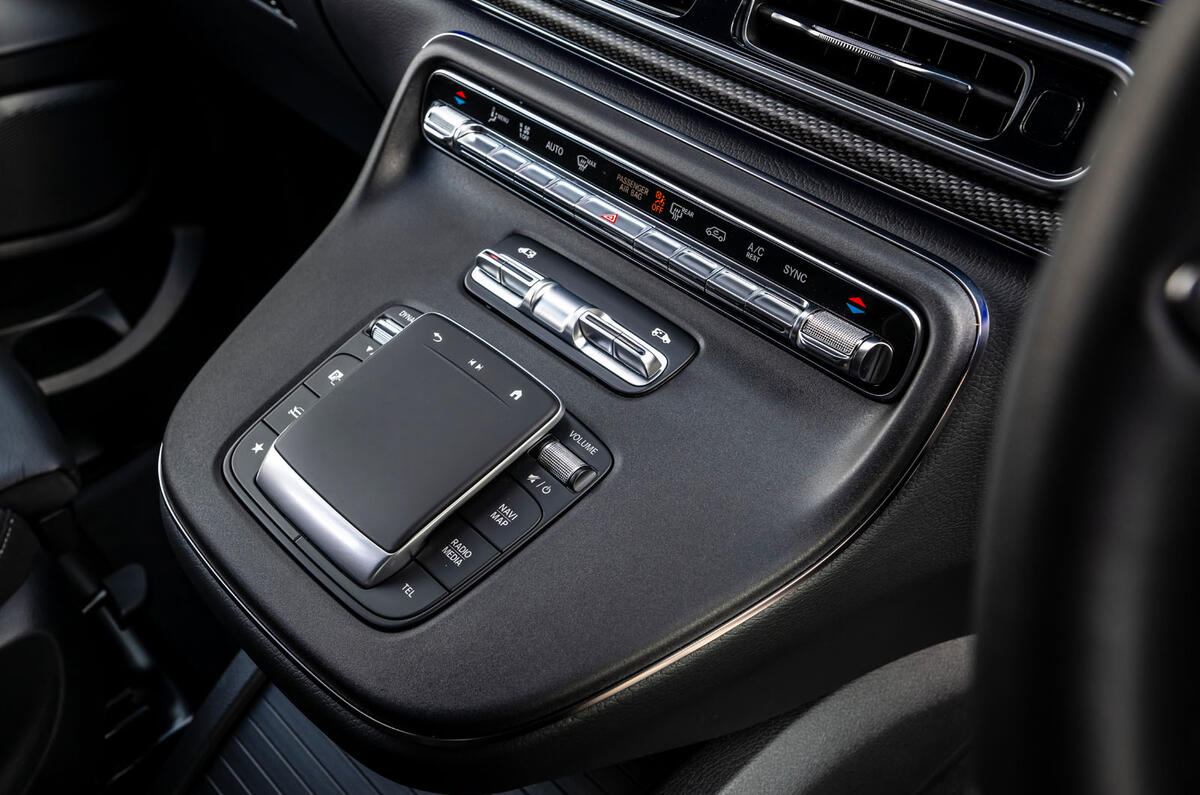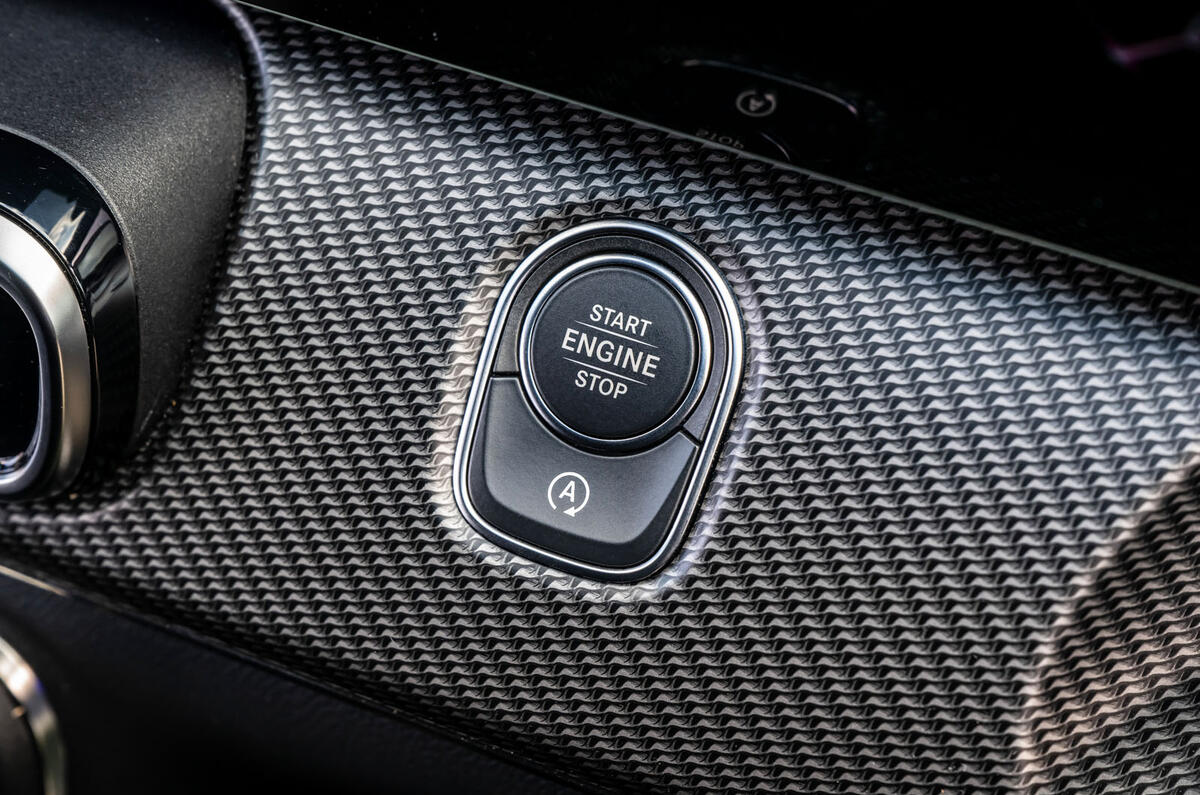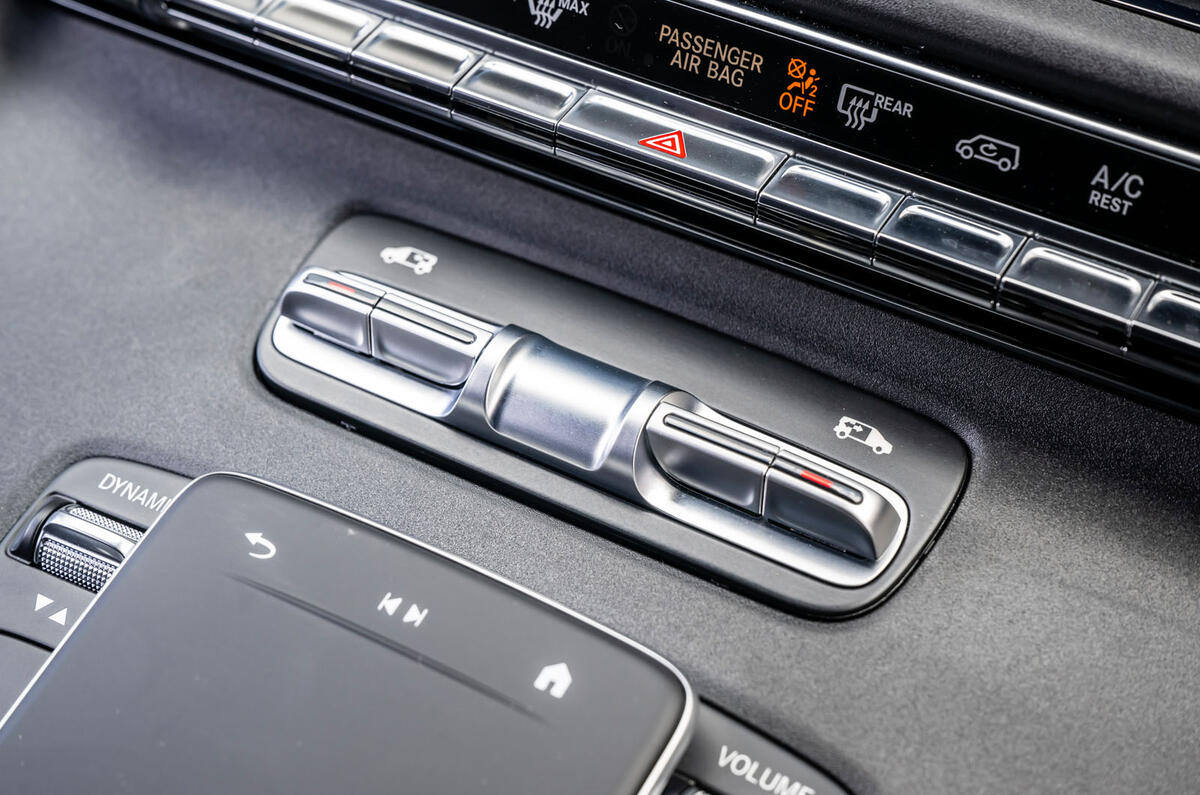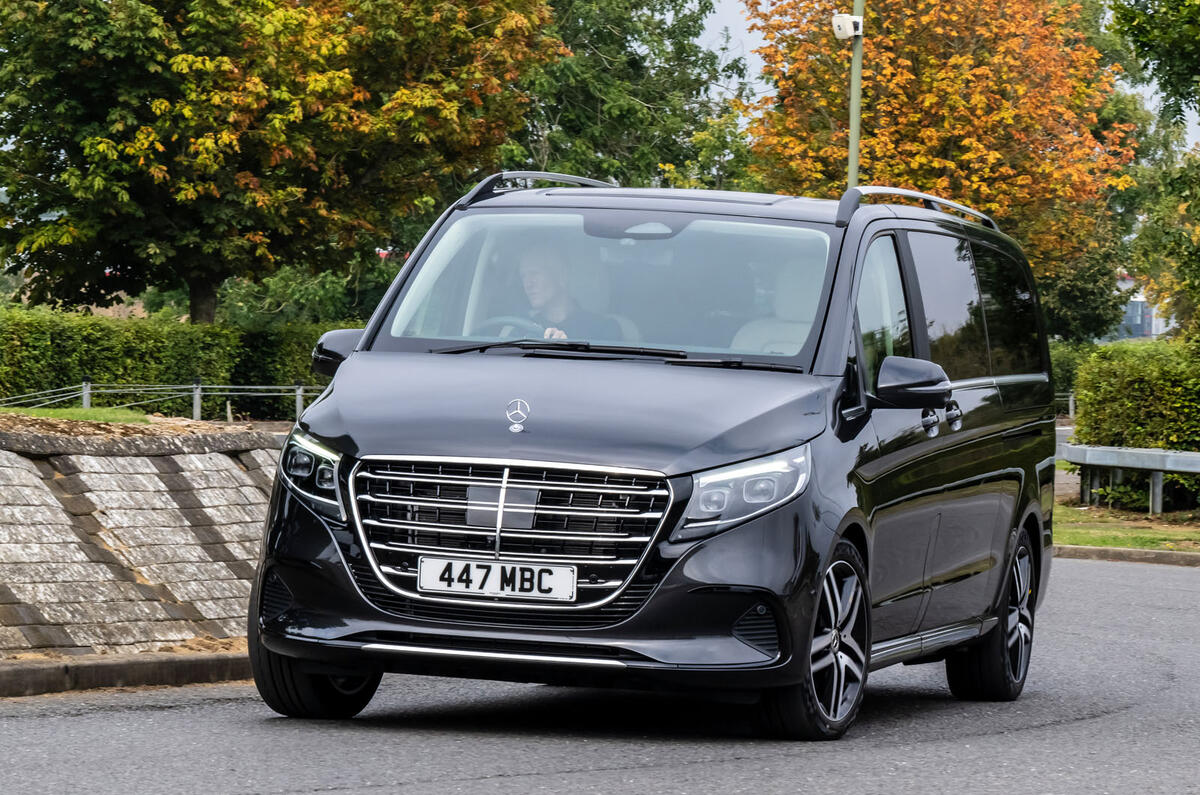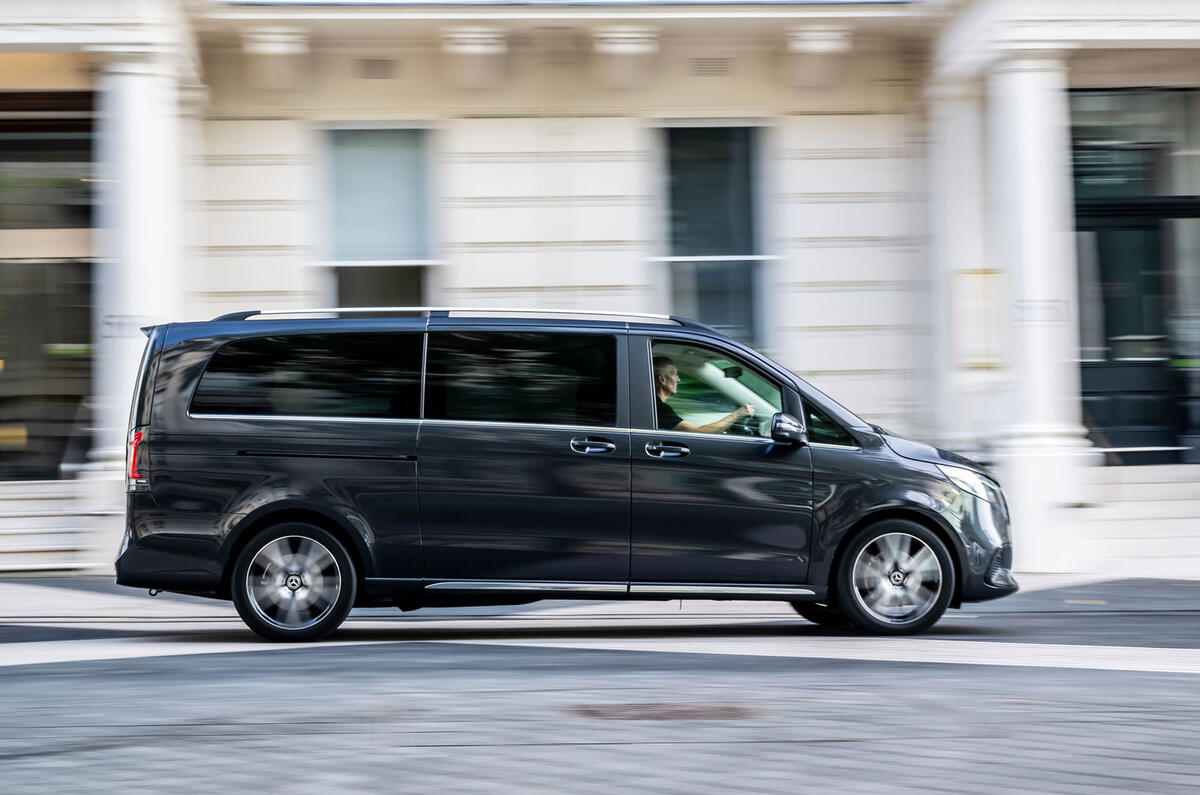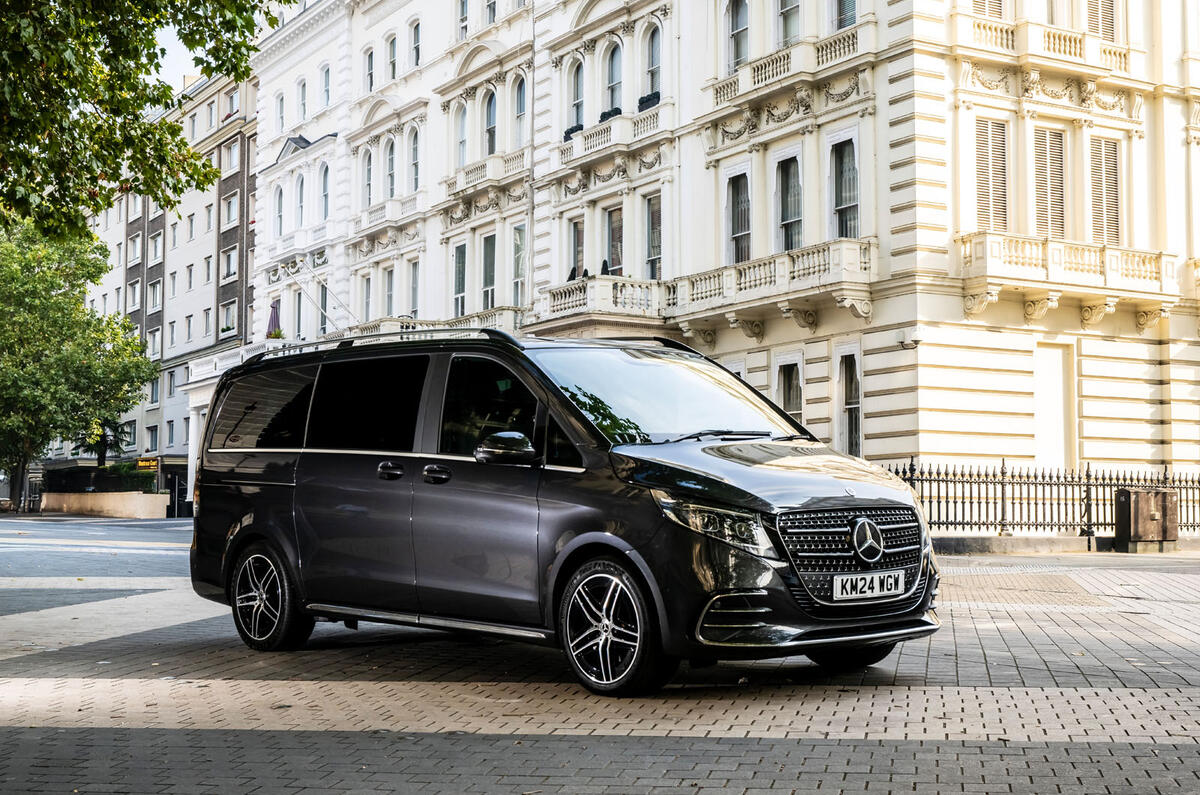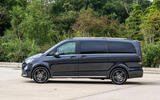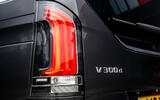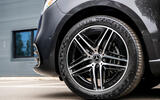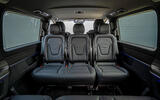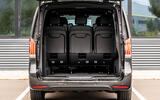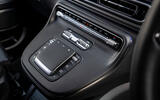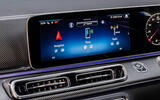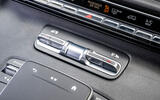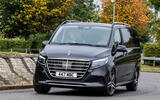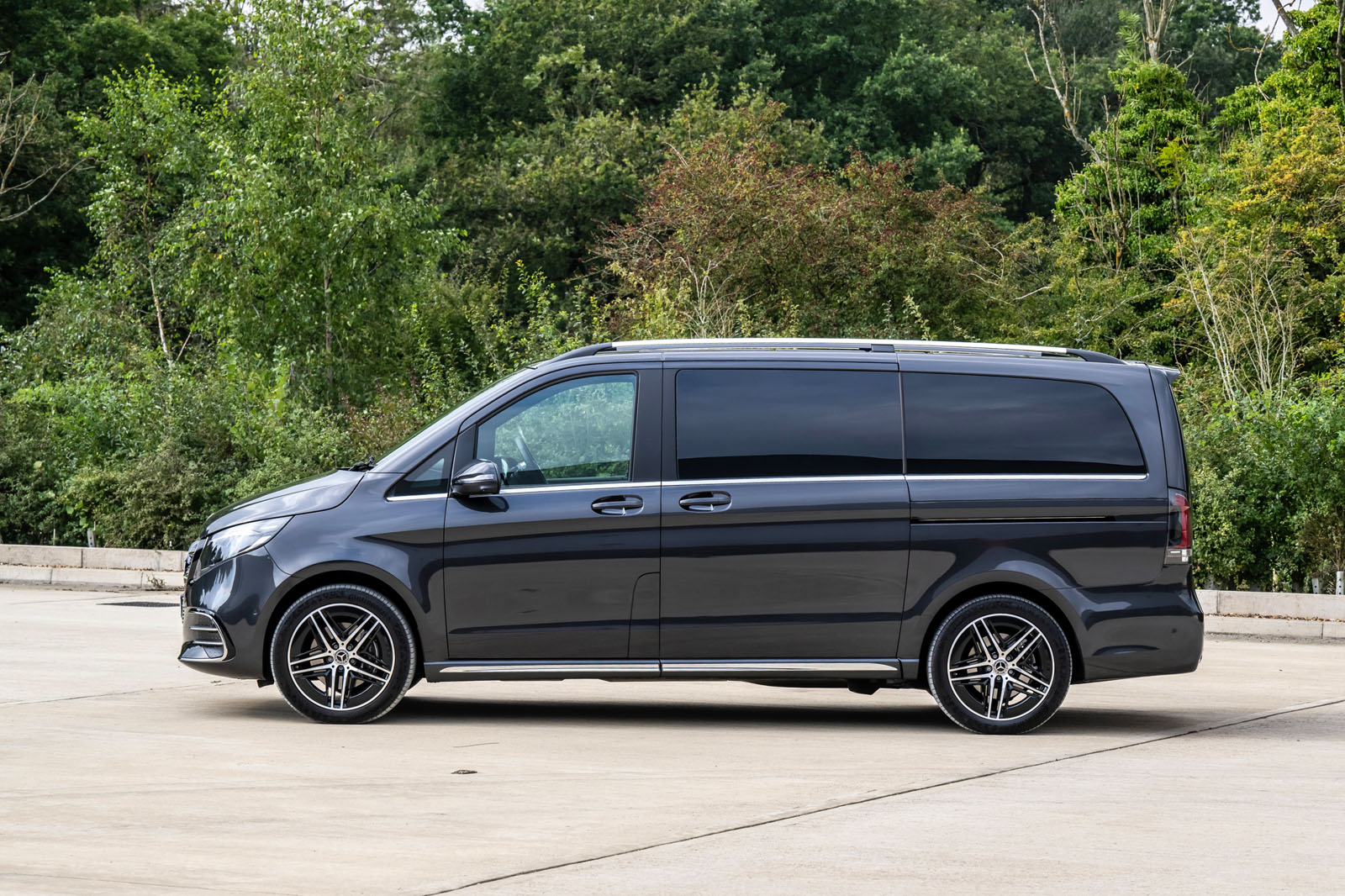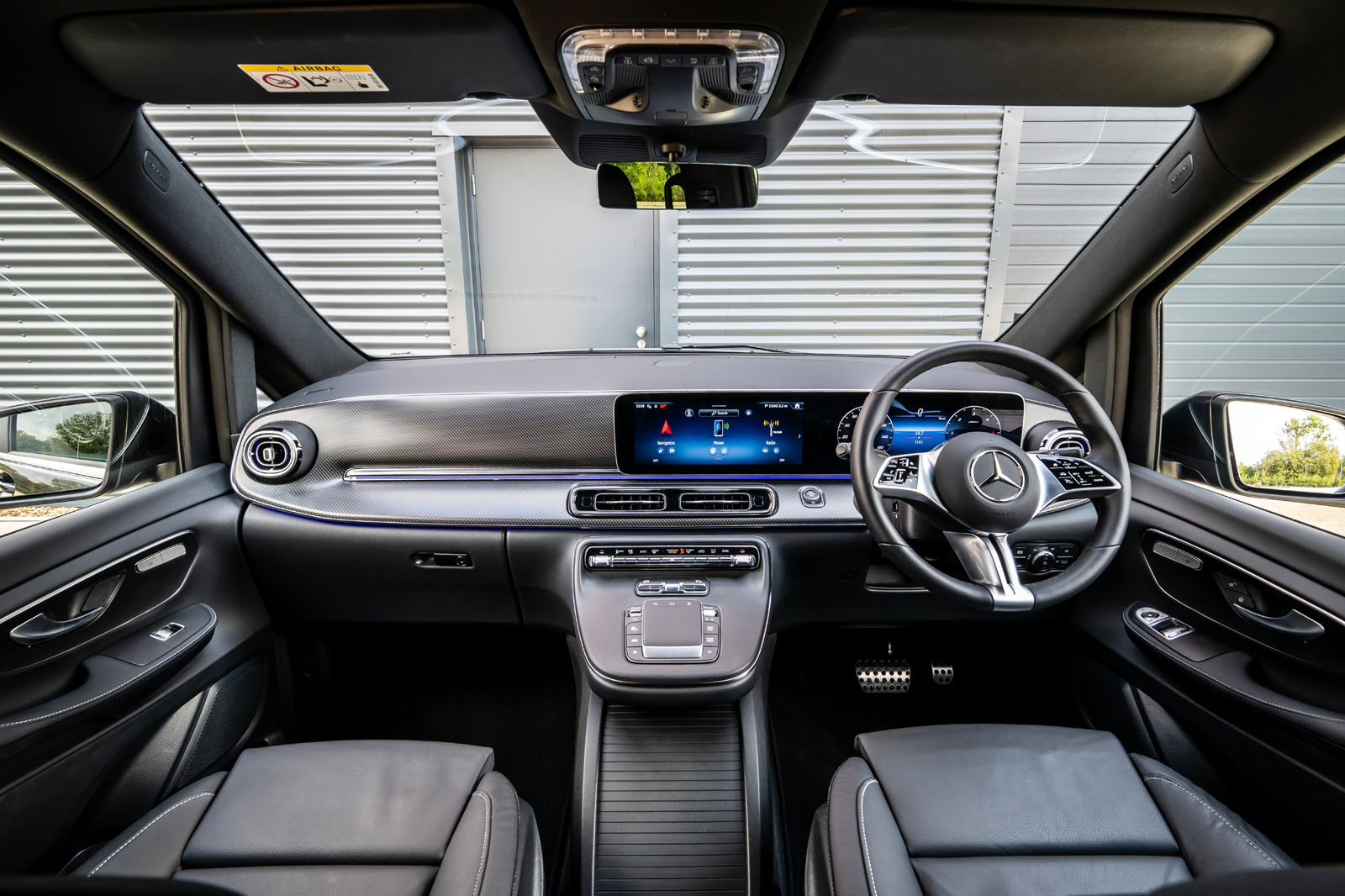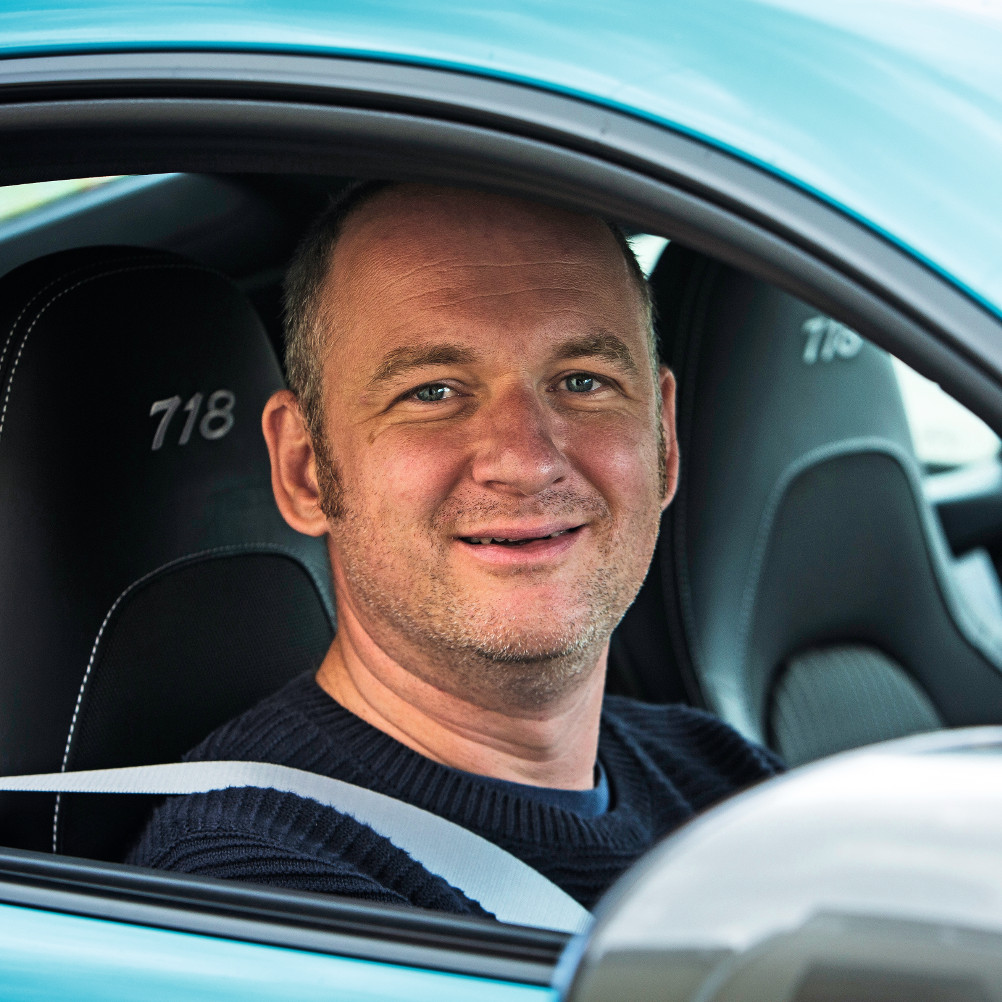The cabin update marks major change. Were it not for the cliff-face geometry of the wide, wood-effect (or, in higher trims, metal-effect) dashboard and the expanse between the front seats (nicely sculpted and with useful armrests), you could almost be forgiven for thinking you had climbed aboard one of Mercedes’ saloons.
Gone are dramatically hooded instrument binnacles and the slightly awkward central touchscreen display, on its plinth. It’s all been replaced with the new generation of MBUX displays (Apple CarPlay and Android Auto compatability come as standard), although the little ledge that houses a touchpad controller is carried over.
In the main, and given the V-Class's van DNA, it feels supremely premium in here – something that's enhanced at night time, when the new ambient lighting comes to the fore.
That said, it can't totally shake if its commercial roots: the high-set driving position gives a great view of the road but the steering wheel is still set at a bus-like angle.
Of course, the front portion of the cabin is not what the V-Class is really about. That would be the passenger region, which is outstandingly spacious in terms of leg and head room, even with the eight-seat configuration (two rows of three in the back).
Luggage space isn't quite as straightforward: there's plenty of it, but only if you opt for the longer bodyshells that Mercedes offers.
The seats themselves are mounted onto rails that run the length of the floor, so you can tinker with the precise amount of leg room each row has. Of course, it's also possible to have one row facing backwards, although you can also do this in the Multivan.
Whichever inlay trim you opt for also extends down the flanks on the cabin and into the third row, so there's a premium atmosphere throughout. Opting for beige leather raises the premium appeal of the V-Class still further, and there are other options such as a Burmester sound system and a panoramic roof, which are included for Exclusive trim.
Our extra-long-wheelbase test car was fitted with the Luxury Seat Package, yours for an eye-watering £10,000. Essentially this ditches the standard seven-seat layout for six even more sumptuous individual chairs.
The two seats in the middle row are further enhanced by the addition of heating and ventilation, a massage function, USB charging ports and smartphone stowage. They also get a powered reclining function complete with extendable footrest, which in combination with that extra wheelbase means few cars offer so much room to stretch out.



